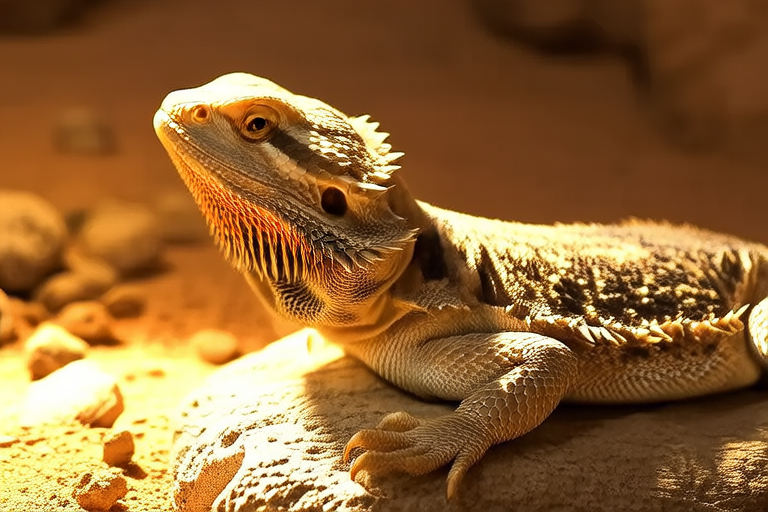Top 10 Fascinating Facts About Bearded Dragons That Every Pet Lover Should Know
Bearded dragons, often affectionately called “beardies,” are among the most popular reptile pets worldwide. Their unique appearance, calm demeanor, and relatively easy care requirements make them a favorite for both novice and experienced pet owners. But what makes these creatures so captivating? Below, we explore ten fascinating facts about bearded dragons that every pet lover should know, covering their behaviors, physical traits, habitat needs, diet, and more.
1. Their Name Comes from a Unique Defense Mechanism
The name “bearded dragon” originates from the distinctive spiny pouch under their chin, which resembles a beard. When threatened or feeling territorial, they puff out this pouch and darken it to appear larger and more intimidating. This display is accompanied by head bobbing and arm waving—behaviors that serve as communication tools in the wild. For pet owners, witnessing this “beard flaring” can be both surprising and fascinating, though it’s usually harmless and part of their natural behavior.
Tip: If your bearded dragon frequently puffs its beard, check for stressors like improper lighting, overcrowding, or unfamiliar surroundings.
2. They Are Native to Australia’s Arid Regions
Bearded dragons hail from the dry, rocky deserts and woodlands of Australia. These regions experience extreme temperatures, with scorching days and chilly nights. In captivity, replicating their natural environment is crucial for their health. Owners must provide a terrarium with a basking area heated to around 95-110°F (35-43°C) and a cooler zone around 75-85°F (24-29°C).
Practical Advice: Use a high-quality heat lamp and UVB light to mimic sunlight, ensuring your pet gets the warmth and vitamin D3 synthesis it needs.
3. Bearded Dragons Have a Remarkable Ability to Change Colors
While not as dramatic as chameleons, bearded dragons can subtly change their skin color to regulate body temperature. During cooler times, they may darken their scales to absorb more heat, while lighter shades help reflect sunlight on hot days. Some individuals also exhibit color changes during breeding season or when stressed.
Fun Fact: A relaxed, happy bearded dragon often sports brighter colors, making them even more visually appealing!
4. They Are Omnivores with Varied Diets
One of the reasons bearded dragons are such adaptable pets is their omnivorous diet. Juveniles primarily eat insects like crickets, mealworms, and dubia roaches to support rapid growth, while adults lean toward a plant-based diet supplemented with occasional protein. Leafy greens, squash, carrots, and fruits like mangoes and berries are excellent choices.
Owner’s Tip: Always gut-load insects before feeding and dust them with calcium powder to prevent metabolic bone disease.
5. Bearded Dragons Can Run on Two Legs
Unlike most lizards that scurry on all fours, bearded dragons have an extraordinary ability to run bipedally over short distances. This behavior, known as “bipedal locomotion,” helps them escape predators quickly in the wild. Watching your pet dash across its enclosure on its hind legs is sure to bring a smile to your face!
Note: Encourage exercise by providing ample space and enrichment items like ramps and branches.
6. Social Interactions Extend Beyond Their Species
Bearded dragons are generally solitary animals but can form bonds with humans through regular handling. They recognize familiar faces and voices, often becoming docile and enjoying gentle interaction. Interestingly, they also communicate with each other using gestures like head bobbing (a sign of dominance) and slow arm waves (a submissive gesture).
Handling Tip: Start with short sessions to build trust, and always approach your dragon calmly to avoid startling it.
7. They Have Third-Eye Vision
Bearded dragons possess a parietal eye, sometimes referred to as a “third eye,” located on top of their heads. While it doesn’t produce images, this organ detects light and movement, helping them sense potential threats from above. It’s believed to play a role in regulating circadian rhythms and thermoregulation.
Cool Insight: The presence of a third eye adds to their mystique and highlights their evolutionary adaptations.
8. Brumation Is Part of Their Natural Cycle
In the wild, bearded dragons undergo brumation—a hibernation-like state triggered by seasonal changes. During this period, they reduce activity levels, stop eating, and sleep for extended periods. Captive dragons may also brumate, especially if environmental conditions mimic those of their native habitat.
What to Do: If your dragon enters brumation, lower the temperature slightly, offer water regularly, and monitor its weight to ensure it remains healthy.
9. They Live Longer Than Many Other Reptiles
With proper care, bearded dragons can live up to 10-15 years, making them long-term companions. This longevity underscores the importance of committing to their well-being and creating a suitable home environment. Regular vet check-ups, balanced nutrition, and a clean habitat are key to maximizing their lifespan.
Reminder: Owning a bearded dragon is a decade-long responsibility, so consider this before bringing one into your family.
10. They Make Exceptional Pets for Families
Bearded dragons are known for their friendly and laid-back personalities, making them ideal pets for families, including households with children. Unlike some reptiles that prefer minimal handling, beardies often enjoy being held and explored gently. Their manageable size, ease of care, and entertaining behaviors make them stand out among reptilian companions.
Why Choose a Bearded Dragon? They combine the intrigue of exotic pets with the simplicity of low-maintenance care, offering endless opportunities for learning and bonding.
Conclusion: Why Bearded Dragons Are Truly Special
From their intriguing defense mechanisms and color-changing abilities to their social interactions and adaptability, bearded dragons are truly remarkable creatures. Whether you’re captivated by their prehistoric charm or drawn to their gentle nature, these reptiles offer a rewarding pet ownership experience. By understanding their unique needs and quirks, you can create a thriving environment where your bearded dragon will flourish.
If you’re considering adding a new member to your household, look no further than the enchanting bearded dragon—a blend of beauty, intelligence, and resilience wrapped up in a scaly package. With proper care and attention, they’ll reward you with years of joy and fascination.
